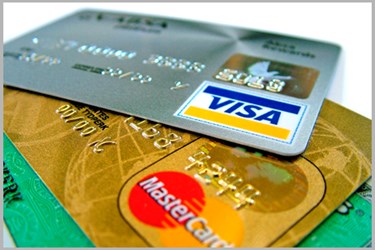Independent Practice Leverages EHR To Implement 'Credit-Card-On-File' Program, Shoring Up Cash Flow
By Amy Rogers, Orthopaedics & Rheumatology of the North Shore

Things began to change for Orthopaedics & Rheumatology of the North Shore (ORNS) once our small, independent practice realized we could no longer afford to operate as a defacto bank for patients.
Like other provider groups across the nation, our Skokie, Illinois-based practice has been grappling with an ever-increasing mix of patients who hold high-deductible health plans (HDHPs). While HDHPs may benefit health insurers’ bottom lines, they can have the effect of severely hampering providers’ cash flow – especially small groups, like our four-provider practice.
We recognized that in order to preserve the practice’s financial health, we needed to implement a “credit-card-on-file” program. We knew that we couldn’t afford to continue supporting the impact that high-deductible health plans were having on our cash flow, especially when our patients’ deductibles average around $3,000.
Working with electronic health records (EHR) company Aprima Medical Software and payment processor Easy Pay Solutions to address the patient collection challenge, we significantly reduced our accounts receivable balance in just six months.
More HDHPs, More Financial Risk For Providers
ORNS is far from alone among medical practices in feeling frustration at being turned into a debt collector. If you’re looking for a culprit, look no further than HDHPs.
HDHPs are defined as health plans with an annual deductible of at least $1,300 for self-only coverage or $2,600 for family coverage, according to the National Center for Healthcare Statistics. In 2011, 28.5 percent of consumers had HDHPs, but by 2016, the number had risen to 40.6 percent.
Under HDHPs, patients pay lower premiums but higher out-of-pocket costs for their medical care. However, many patients typically defer payment on their healthcare bills until they’ve first met other financial obligations, resulting in cash crunches for providers who watch their accounts receivable balances escalate while collections lag.
Automatic Point-Of-Care Payment
Credit-card-on-file programs are common for a wide variety of consumer services, but healthcare organizations have been slow to implement similar initiatives for patient collections. To relieve our practice from the potentially crippling effects of HDHPs, we decided to implement such a program, which required no up-front investment.
Our new policy requires all patients – except Medicaid patients – to provide the practice with a credit card number that is stored on file with Easy Pay Solutions. Rather than accepting a default non-payment policy, payment is now captured automatically when a balance is due by the patient.
Patient education has been critical to the new program’s success. When new patients call the practice to schedule an appointment, staff advise them of the credit-card-on-file policy. We also display signage that explains the policy, and the staff is well-trained in addressing any patient concerns.
Easy EHR Integration
Since the new program’s inception, the integration between Aprima and EasyPay has been seamless, resulting in no decline in staff productivity. The credit-card-on-file process is integrated into staff workflows for patient pre-registration and intake. Instead of running statements, through the EasyPay/Aprima integration we auto charge all cards on file with patient balances. With one click, all of the account balances are processed, payments are automatically posted to Aprima. The solution posts credit card payments in batch, and applies payments to individual accounts, based on predetermined rules by ORNS.
The solution also allows for easy customization. For example, we have established limits on the amounts charged to credit cards, such as $500 per swipe for patients with private insurance and $200 per swipe for Medicare patients. Medicaid patients are not required to keep a credit card on file because they have no deductibles.
When necessary, we try to establish payment plans that satisfies the patient’s financial needs, while also adhering to the practice’s revenue cycle requirements. If a patient has a large balance, EasyPay can be set up to automatically charge a patient’s card monthly for a predetermined number of months within the Aprima software. EasyPay calculates the monthly charge amount and automatically processes the payments.
Fast And Meaningful Results
ORNS has seen a dramatic impact on accounts receivable since implementing our credit-card-on-file program. For example:
- Patient accounts receivables fell 28 percent within the first six months of implementing the program
- In the first three months of 2017 – when patients are traditionally paying out-of-pocket to meet deductibles – ORNS experienced a 53 percent decline in accounts receivable compared to the previous year
- During the first quarter of 2017, receivables in the 91-to-120-day category declined 73 percent year-over-year
- Significant reduction in statement service costs, including mailing, and supplies
- Reduction in staff time – no more posting payments individually from statement payments received
- Seventy percent reduction in patient accounts receivable has been achieved since credit card on file began
After our experience, we are convinced that all healthcare providers could benefit from a credit-card-on-file program. As an industry, we need to create the expectation that patients need to pay their bills because we can no longer afford to manage their no-interest loans. Thanks in part to a small investment and support from our technology partners, ORNS’ cash flow issues are a thing of the past.
About The Author
Amy Rogers is officer manager at Orthopaedics & Rheumatology of the North Shore.
